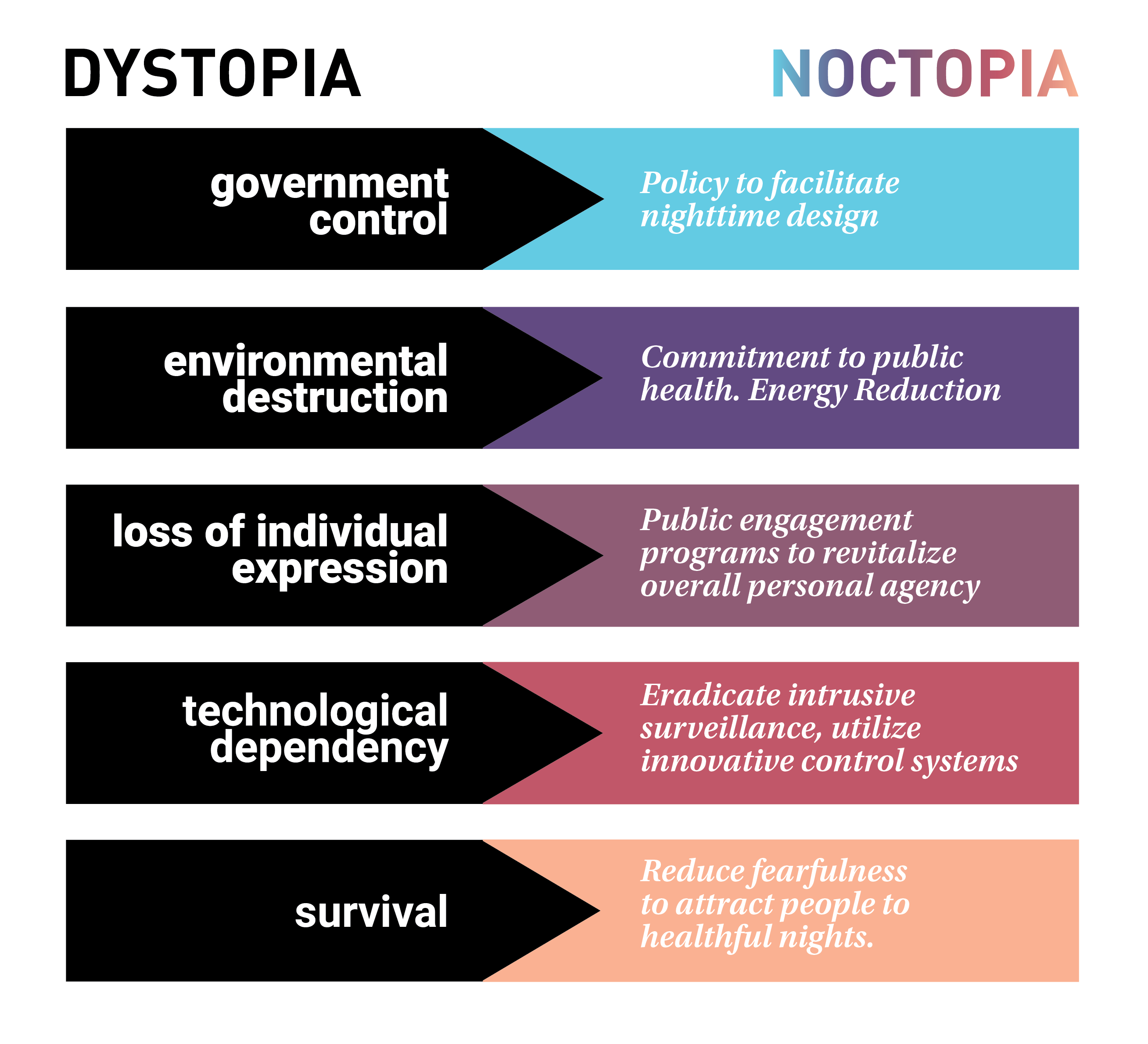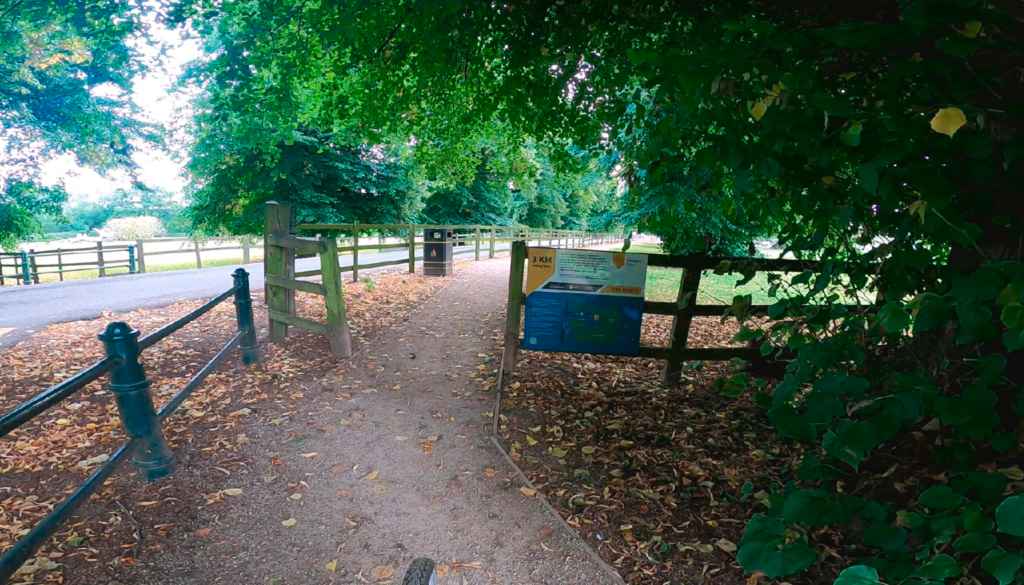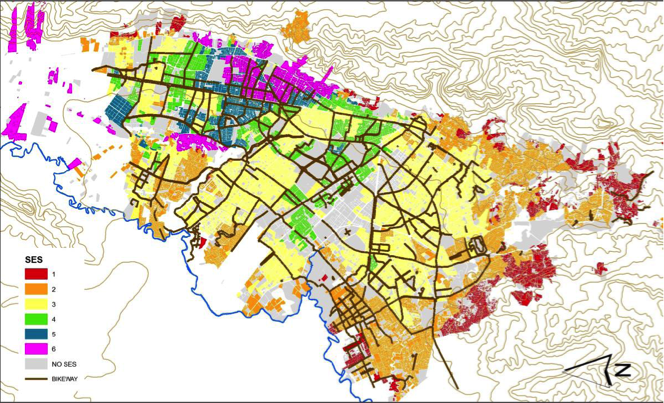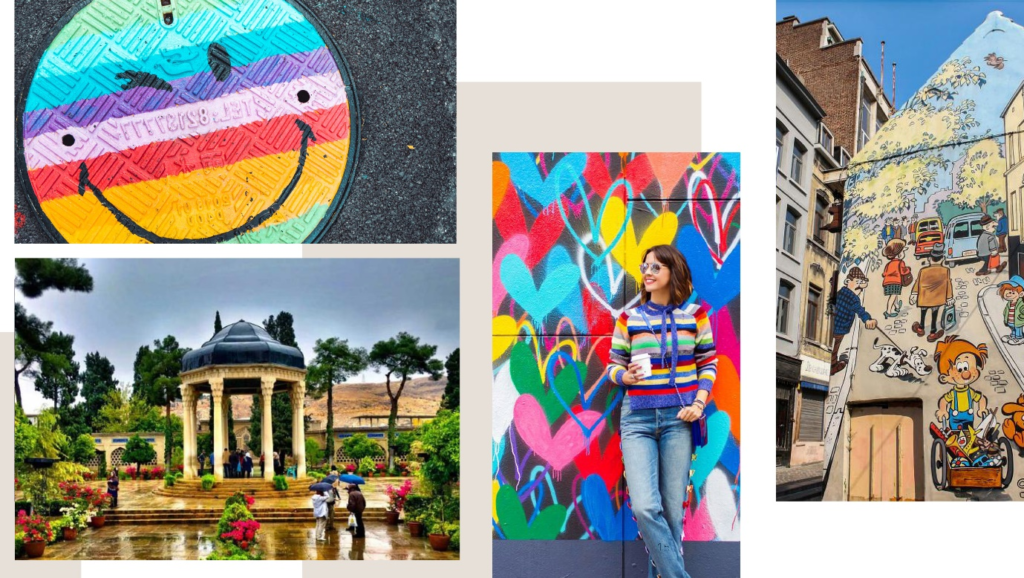City Know-hows

Dystopian frameworks portend the future. With climatic upheavals increasing, dystopia is now. Because of escalating urban heat and heat-related illness and death, this essay speculates a future that switches daily activities into the coolness of night: Noctopia.
Share
Target audience
Urban Planners, Civic leaders, Health and city policy makers
The problem
As long as the earth encircles the sun and urban heat escalates, nighttime matters as a space and time for respite.
However, our nights are undesigned and neglected. And are not fit for “daily” consumption.
This manifesto posits a kind of revolutionary adaptation–a switch up of night for day. Here, we contemplate: Is it possible to transform negative impressions of darkness by designing optimistic spaces after sunset?
What we did and why
I am a hybrid professional urban lighting/nighttime designer. Public space after dark has been my site for more than a decade. My research group and I have identified cases where work and play are shifting to the dark hours. I strongly believe that that shift will continue. My point to climate change activists and city-makers is that we need, now, to embrace nighttime design.
Our study’s contribution
This study adds cases where work and play scenarios have moved to night – with in humane, undesigned environments such as glary lighting and lack of services.
A utopian/Noctopian vision is posited with community-engaged design combined with technologically enabled, adaptive lighting. For example, in Noctopia, the library is open at midnight; luminous benches provide safe respite. Late-night closings thrive in midweek, especially along the transit corridor. A night market is open around the corner. Posters are up for a midnight concert at the local park, with provisions for audio headsets to coexist with the residential district.
Impacts for city policy and practice
Nighttime design is a new discipline or approach that is gaining traction. However, liveable nighttime environments are unevenly considered throughout the world’s cities. Lighting, urban design, and tech areas are implicated. And therefore, a multiplicity of city agencies are involved with holistic nighttime design… …unbeknownst to them! Example city departments include:
• Public works
• Urban planning and design
• Cultural agencies
• Building departments
• Climate change or heat specialities
• Public health
• And rarely, but growing, nightlife divisions
Further information
Full research article:
Night for Day by Leni Schwendinger
Related posts

Wayfinding interventions offer a viable, low-cost, intervention to increase recreational walking in urban greenspaces for irregular users, older adults and those with mobility impairments.

Lack of ‘Ciclorutas’ (bicycle lanes) in Bogota’s neighbourhoods of low socio-economic status shows inequality in the access to active transportation options, potentially increasing health disparities.

When designing and managing public space, decision-makers and designers should:
• involve citizens in the process,
• consider all of the factors that contribute to citizen happiness,
• use evidence-based approaches to inform their decisions,
• monitor and evaluate the impact of public spaces on citizen happiness